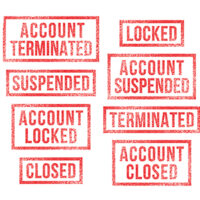
So much has been published recently about human trafficking, which is a heinous crime that all of us must come together to help eliminate as best we can.
The United Nations Office on Drugs and Crime defines human trafficking as “the recruitment, transportation, transfer, harbouring or receipt of persons, by means of the threat or use of force or other forms of coercion, of abduction, of fraud, of deception, of the abuse of power or of a position of vulnerability or of the giving or receiving of payments or benefits to achieve the consent of a person having control over another person, for the purpose of exploitation. Exploitation shall include, at a minimum, the exploitation of the prostitution of others or other forms of sexual exploitation, forced labour or services, slavery or practices similar to slavery.”1
As community bankers, what can we do to help fight this horrific crime?
The number one item to do is to get involved and attend law enforcement trainings on human trafficking. By keeping an open dialogue with law enforcement, you can keep up with changes in typologies and learn the red flags specific to your customer’s location. In addition, try to pick out financial red flags you can run in your anti-money laundering systems to help identify possible human trafficking. Some examples we have obtained from law enforcement over the years are utilizing key-word search reports to look for hotel purchases, plus cash-ins and Backpage/Craigslist advertising purchases via point of sale (POS) transactions or credit card transactions. Another tip we used was looking at POS transactions that were exact amounts that were done off hours when the businesses were closed. Most of the businesses we reviewed were nail salons and spas.
The second item is to read and stay current on human trafficking news and red flags, so that you know what is occurring in the areas that your bank has a footprint. One of the items I have carried out is to create Google alerts for human trafficking and Virginia (the state our bank is located). In setting these alerts, I have received many articles that are local to my bank’s footprint. I have also created a general Google alert for human trafficking to receive national information.
The third item is to have an open dialogue with other banks on what red flags they may be seeing. In addition, start a working group in your area to meet and discuss current typologies (if possible, be sure to invite law enforcement to those meetings as well).
One great resource for red flags on human trafficking transactional activity is FINTRAC-2016-OA003, published by the Financial Transactions and Reports Analysis Centre of Canada (FINTRAC).
The following are some of the red flags FINTRAC shares:
- “Online advertising and promotional services (e.g., escort services, massage services, relationship services, related peer-to-peer online booking services): frequent payments in multiples of small amounts (e.g., $3, $12, $24) in relatively short timelines and inconsistent with expected activity;
- Accommodations (e.g., hotels, motels, peer-to-peer online booking services for private and commercial lodgings): payments for short stays and/or stays in multiple cities in a relatively short time period; and
- Distance transportation: frequent purchases for airline, train, and/or bus tickets, possibly for multiple individuals, in relatively short timelines and inconsistent with expected activity.”2
Human trafficking is unfortunately all over and as community bankers we need to be vigilant and stay up-to-date with some of the financial aspects of this crime.
The Community Banking Corner section provides useful tips for Bank Secrecy Act/anti-money laundering (BSA/AML) professionals in community banks to help them in their day-to-day jobs. If you are a community banker with topic ideas you would like to have discussed, please send them to robert.soniat@bankatunion.com or editor@acams.org.
- “Human Trafficking,” UNODC, https://www.unodc.org/unodc/en/human-trafficking/what-is-human-trafficking.html
- “Indicators: The Laundering of Illicit Proceeds from Human Trafficking for Sexual Exploitations,” FINTRAC, December 15, 2016,
http://www.fintrac-canafe.gc.ca/guidance-directives/overview-apercu/operation/oai-hts-eng.pdf










